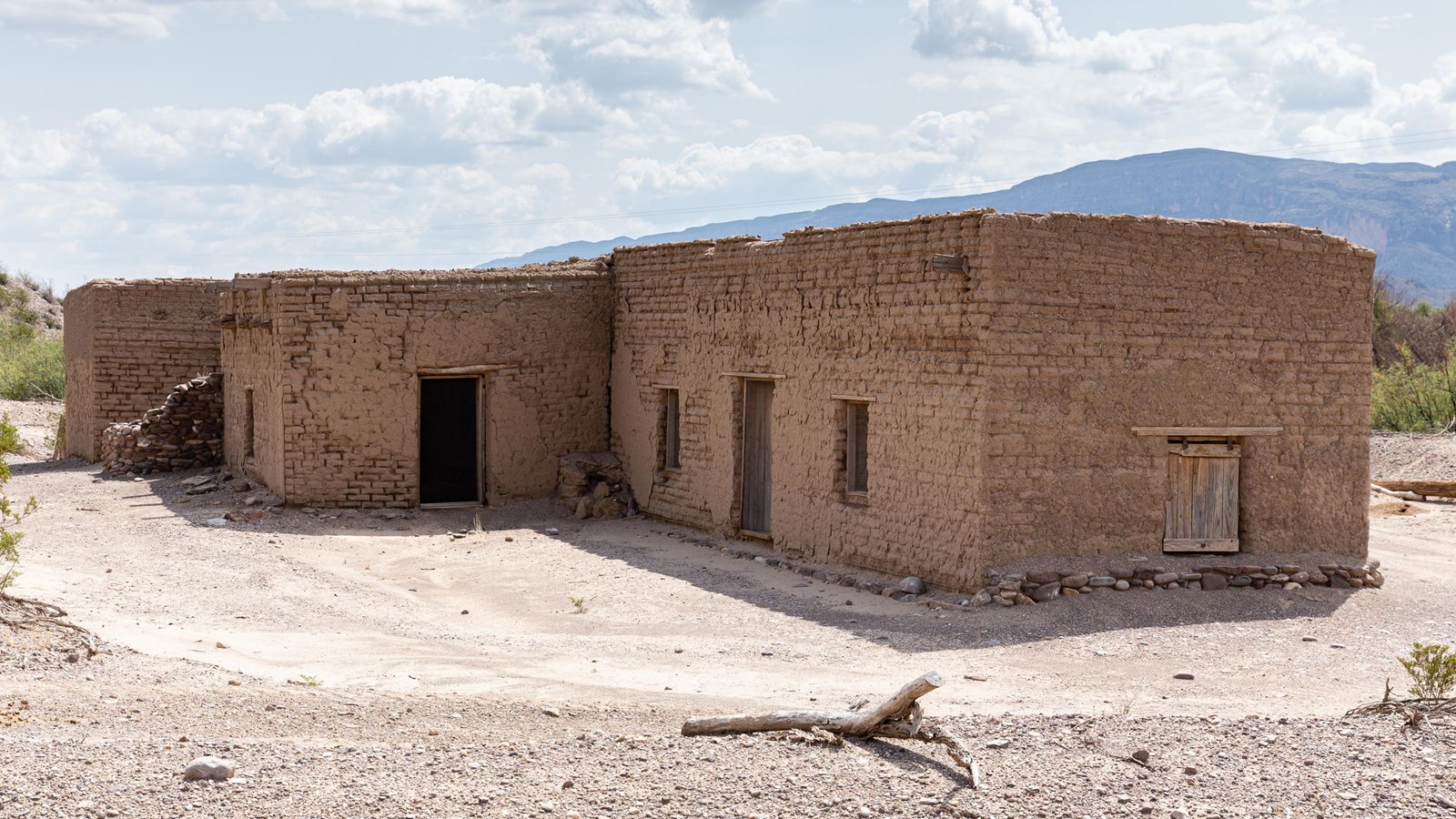Last updated: March 22, 2022
Place
Alvino House

Quick Facts
Location:
Along the Ross Maxwell Road in Big Bend National Park, Texas
Significance:
The Alvino House the oldest intact adobe structure in the park, dating form ca. 1903. It is located at the base of the bluff on which the other structures are situated, however, it is not part of the general scene of the army compound. The Alvino House was the first store in the Castolon area and was run by the first resident Cipriano Hernandez in the east end of the house.
Designation:
U.S. National Register of Historic Places, U.S. Historic District, HABS
Amenities
1 listed
Historical/Interpretive Information/Exhibits
The Alvino House is the oldest intact adobe structure in Big Bend National Park. The building represents the everyday life of the many families who lived and farmed along the Rio Grande. This building was constructed around 1901 by Cipriano Hernandez, one of the Hispanic settlers who farmed near Castolon. He raised vegetables and grain for sale to the mining camps. Corn, beans, squash, tomatoes, and melons were common crops grown by families along the Rio Grande.
As the population grew, Hernandez enlarged his home and used the space to open a small store where he sold supplies to his neighbors. In 1918, Alvino Ybarra moved into the house. In 1922, Alvino married Teofila Luna and raised three sons and three daughters in the house. Even in this remote area, education was a priority, so the Ybarra children attended school for four months in Castolon, then four months in Terlingua, as there were not enough teachers to keep both schools open for an entire school year.
Alvino earned his living by operating the engines that powered the cotton gin and the water pump that brought water from the Rio Grande to irrigate the fields. He worked from 5 a.m. to sundown, earning premium wages for the area of $1.50 per day. This was further supplemented by working as a La Harmonia Company tenant farmer. The Alvino House also served as a civil center for area residents. Alvino’s family set aside a room as a religious shrine, where a priest performed masses, baptisms, and weddings several times a year. The community also celebrated holidays at the Alvino House, coming together as friends and family.
Teofila Ybarra died in 1936, but Alvino continued living here until 1957, when he moved to Alpine. Several of their grandchildren still live in the Big Bend region.The Alvino House affords a close look at a recently repaired and stabilized adobe structure. Adobe masons from Santa Helena, Mexico used their expertise to restore this structure in 1994. The men manufactured adobe bricks on the site, shored up the sagging roof, and repaired the walls. The berm around the foundation of the structure was built in 2008 to protect it from floodwaters.
As the population grew, Hernandez enlarged his home and used the space to open a small store where he sold supplies to his neighbors. In 1918, Alvino Ybarra moved into the house. In 1922, Alvino married Teofila Luna and raised three sons and three daughters in the house. Even in this remote area, education was a priority, so the Ybarra children attended school for four months in Castolon, then four months in Terlingua, as there were not enough teachers to keep both schools open for an entire school year.
Alvino earned his living by operating the engines that powered the cotton gin and the water pump that brought water from the Rio Grande to irrigate the fields. He worked from 5 a.m. to sundown, earning premium wages for the area of $1.50 per day. This was further supplemented by working as a La Harmonia Company tenant farmer. The Alvino House also served as a civil center for area residents. Alvino’s family set aside a room as a religious shrine, where a priest performed masses, baptisms, and weddings several times a year. The community also celebrated holidays at the Alvino House, coming together as friends and family.
Teofila Ybarra died in 1936, but Alvino continued living here until 1957, when he moved to Alpine. Several of their grandchildren still live in the Big Bend region.The Alvino House affords a close look at a recently repaired and stabilized adobe structure. Adobe masons from Santa Helena, Mexico used their expertise to restore this structure in 1994. The men manufactured adobe bricks on the site, shored up the sagging roof, and repaired the walls. The berm around the foundation of the structure was built in 2008 to protect it from floodwaters.
